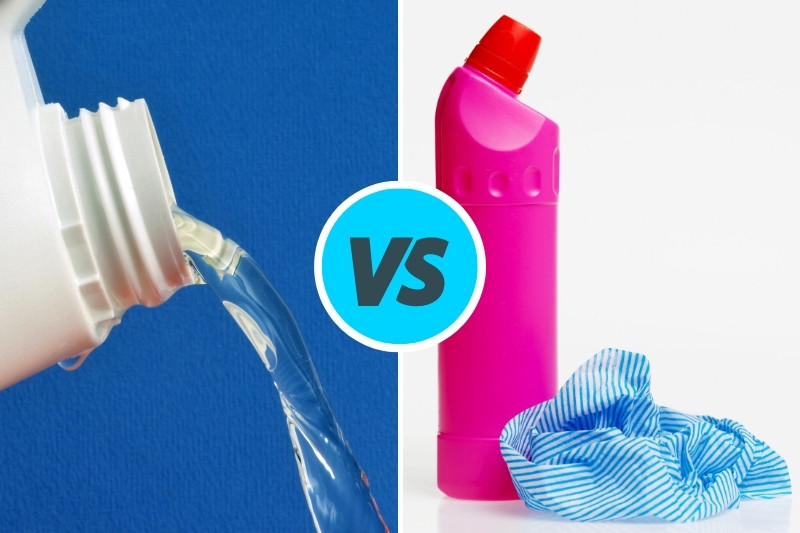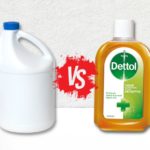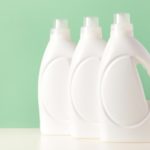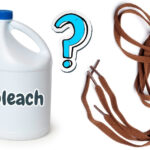Bleach has a multitude of uses and can be commonly found in almost all household shops.
Office spaces, homes and other places use bleach for its highly effective disinfectant properties. If you are looking for bleach and are confused by the different types, don’t worry, we have you covered here.
In reality, thin and thick bleach are very similar except for, you guessed it, their thickness. While that’s true, there are be situations where using a specific bleach can be beneficial. It is essential that we select the right product for use.
We will talk in detail about thin and thick bleach and where they can be put to service. Let’s get started.
Is There a Difference Between Thin and Thick Bleach?
Yes and no. Yes, because thick bleach has an added gelling agent that makes it denser, enabling it to flow slowly and stay in contact with surfaces for an extended period.
However, there is very little chemical difference between them as both thick and thin bleach predominantly contain sodium hypochlorite, the main component that makes up bleach.
Both thin and thick bleach will kill the same spectrum of bacteria, viruses and fungi. As thick bleach sticks to the surface for a longer time, it acts more competently in the disinfection process. Thin bleach also has its own specific uses, which we will discuss in the upcoming section.
Uses of Thick Bleach
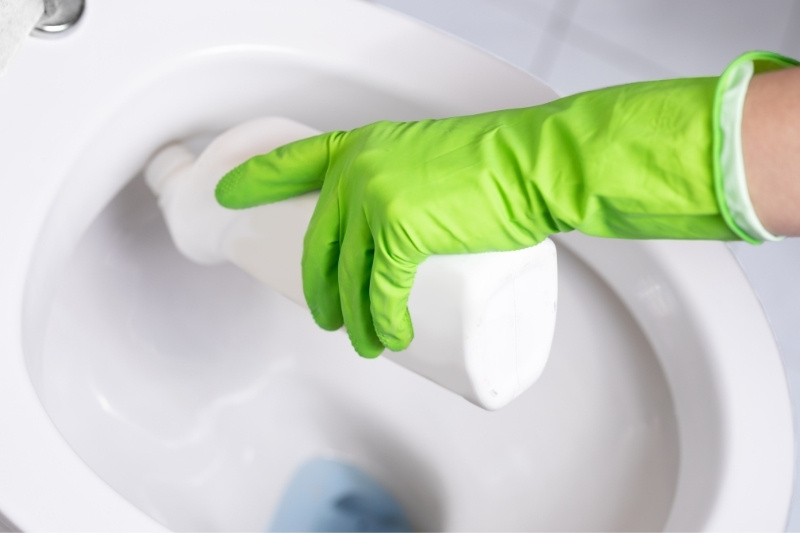
Hard surfaces
As mentioned above, thick bleaches are primarily used for cleaning hard surfaces. As they flow slowly, they cover all areas thoroughly and kill the maximum number of germs on the given surface. This is great for areas that aren’t flat, such as the toilet bowl.
Porcelain
It’s a good idea to use thick bleach in areas where the bacteria count is high, especially on porcelain. This is most commonly the bathroom. Common stains on surfaces like your shower, toilet, draining pipe, sink etc. can be easily removed with thick bleach.
Surfaces that are frequently touched
These days, keeping your house hygienic is of utmost priority. Areas that are frequently touched, like door handles, taps and common appliances three times a week should keep your home clean and germ-free.
Toilets, showers and kitchen countertops
Toilet surfaces, the shower region, kitchen countertops and similar areas can be tended to once a week with thick bleach. There are some surfaces such as wood, granite and metal which can be discoloured by bleach so it’s best to get a dedicated cleaner for these.
White laundry
You should never use thick bleach for coloured clothes as it will quickly fade. Nevertheless, it is completely safe to use it for white fabrics. Thick bleach should also not be mixed with other cleaning materials.
Uses of Thin Bleach
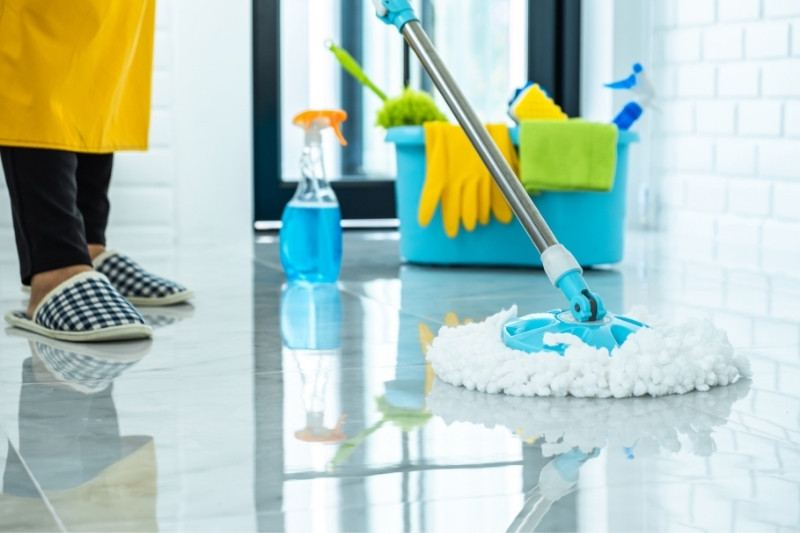
Thin bleach is more economical and suitable for general-purpose cleaning.
It is ideal for laundry purposes as well as general cleaning and disinfecting of materials.
Using a limited amount will keep your fabrics safe and aid in removing any unwanted smell in materials that you commonly use.
While it is best suited to use as a disinfectant and whitener for fabrics, you can also use it for sanitising regular use equipment, like your toddler’s toys, for instance.
For disinfecting purposes, you can use thin bleach to remove stains and sterilize a wide variety of bacteria that are commonly found on toilets, floors, and drains. It is also highly effective against bleach-resistant surfaces.
So, is thin bleach better than thick bleach? It depends. Both of them have specific uses, and employing thin bleach for laundry materials and thick bleach for disinfecting surfaces is recommended.
Precautions While Using Bleach
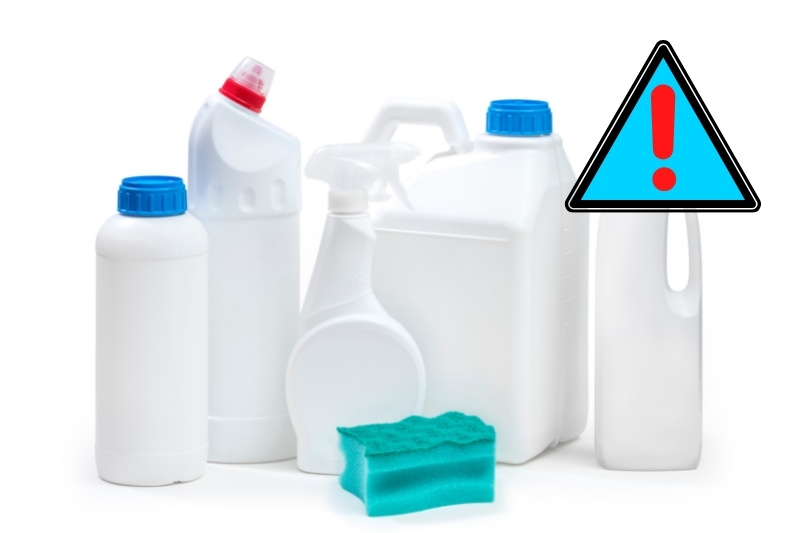
No matter what type of bleach you intend on using, every one of them requires careful handling. Here are some basic guidelines.
First and foremost, remember to check for the use of the particular bleach that you want to buy. As thick and thin bleaches have different purposes, make sure to read the safety instructions on the bottle label.
Also, make sure that the particular bleach can be used on surfaces/materials that you plan to use it on.
Many people can experience irritation of the skin, eyes, nose or throat when using bleach. To stay safe, it’s sensible to wear protective clothing like gloves to avoid contact. Ensuring proper ventilation is also a major factor to consider while using bleach.
Avoid contact with eyes, nose and other sensitive parts of your face. If it gets into your eyes by any chance, rinse immediately with tap water for a minimum of 15 minutes. Seek medical assistance as soon as possible to prevent risks of any kind.
Most importantly, bleach should not be left unattended on any surface for an extended period. Bleach is extremely powerful and can easily corrode or discolour the material. Always mop up spillage instantly and keep them away from children.
It is highly important that thick bleach does not come in contact with common cleaning agents like ammonia or hydrochloric acid as it results in the formation of highly hazardous gas. After using thick bleach, remember to wash the cleaned area thoroughly with water.
Final Thoughts
While they can be used for the same thing, thick bleach is better for cleaning hard surfaces and thin bleach is better to use for laundry and general cleaning. Picking the right one for your needs will make your life a lot easier.

I’m a mother of three who loves going on fun adventures with my family. With three little ones, I’ve learned the hard way how to keep a busy home clean! I want to share my tips and tricks to make your life as easy as possible.
